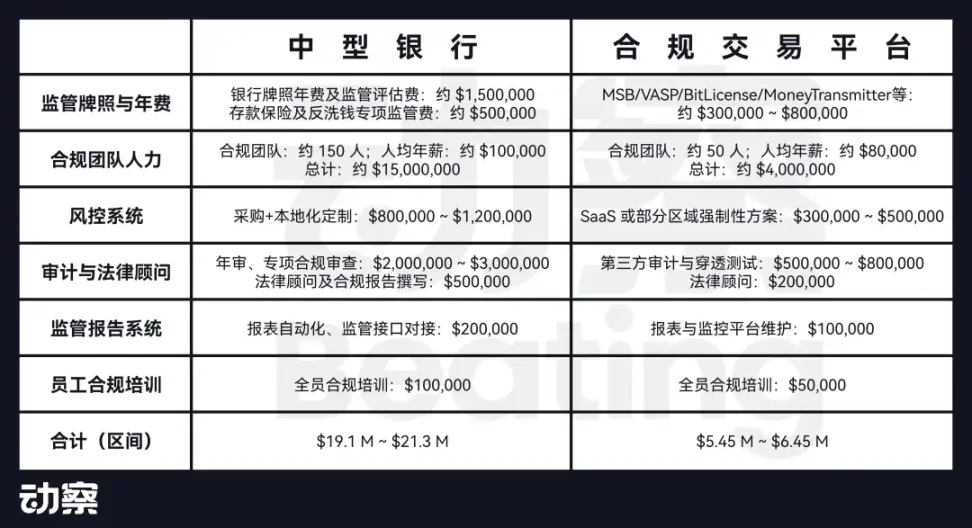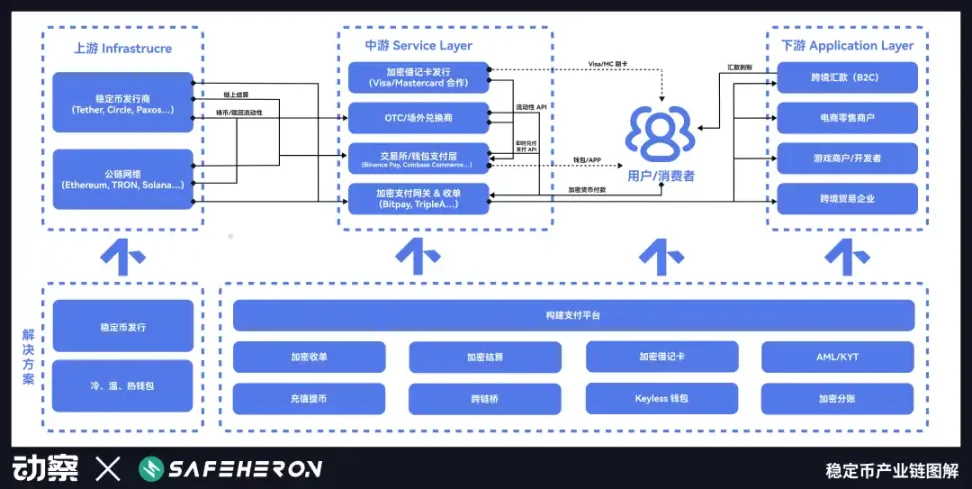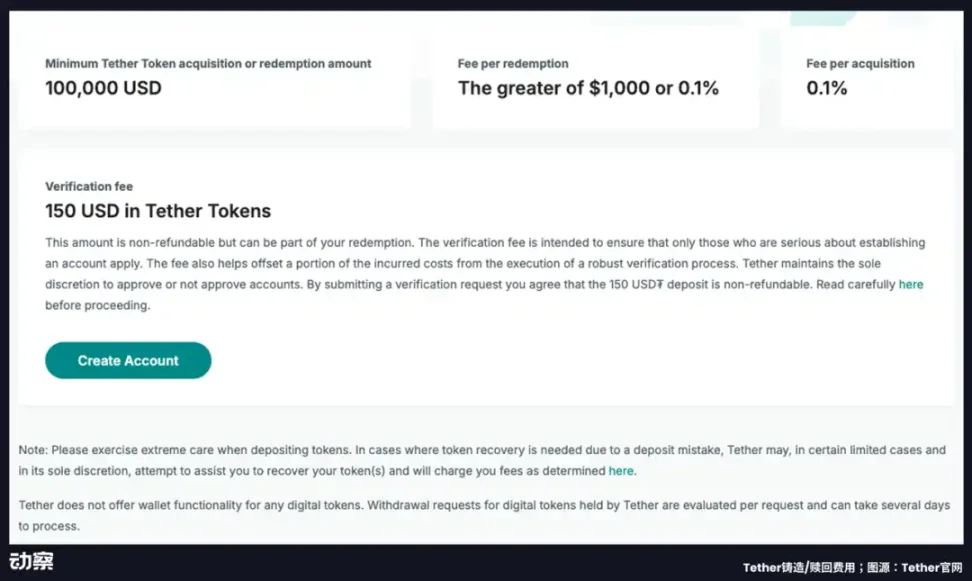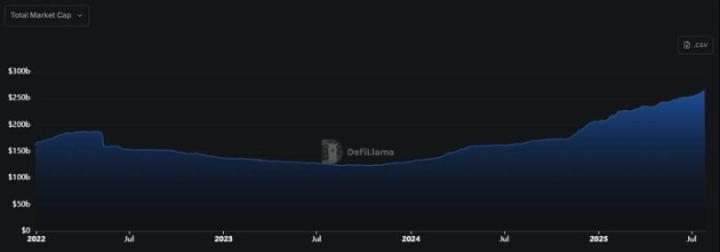This is not a lightweight entrepreneurial opportunity. From Wall Street investment banks to Bay Area tech companies, and Asian financial giants to payment platforms, more and more enterprises are eyeing the same business - stablecoin issuance.
With economies of scale, the marginal issuance cost for stablecoin issuers is zero, which looks like a risk-free arbitrage game in their eyes. In the current global interest rate environment, the interest spread is incredibly attractive. Stablecoin issuers only need to deposit users' dollars into short-term US Treasury bonds, and they can steadily earn billions of dollars annually by collecting 4%~5% interest income.
Tether and Circle have already proven this path, and with stablecoin regulations gradually being implemented in different regions, the compliance pathway has become clearer. More and more enterprises are eager to try, including FinTech giants like PayPal and Stripe. Not to mention that stablecoins naturally have the ability to integrate with payment, cross-border settlement, and even Web3 scenarios, with enormous imaginative potential.
Stablecoins have become a must-compete arena for global financial companies.
But the problem lies precisely here. Many people only see the seemingly risk-free arbitrage logic of stablecoins, overlooking that this is a capital-intensive, high-threshold business.
How much would it cost for a company to legally and compliantly issue a stablecoin?
This article will break down the real costs behind a stablecoin and tell you whether this seemingly simple arbitrage business is worth doing.
Accounts Behind Stablecoin Issuance
Many people believe that issuing a stablecoin is simply creating an on-chain asset, which seems technically low-barrier.
However, truly launching a stablecoin with a compliant identity for global users involves a far more complex organizational structure and system requirements. It involves not only financial licenses and audits but also fund custody, reserve management, system security, and continuous operation across multiple dimensions of heavy asset investment.
In terms of cost and complexity, the overall construction requirements are no less than those of a medium-sized bank or compliant exchange.

The first threshold for stablecoin issuers is building a compliance system.
They often need to simultaneously address regulatory requirements from multiple jurisdictions, obtaining key licenses such as US MSB, New York BitLicense, EU MiCA, and Singapore VASP. Behind these licenses are detailed financial disclosures, anti-money laundering mechanisms, and ongoing monitoring and compliance reporting obligations.
Benchmarked against mid-sized banks with cross-border payment capabilities, stablecoin issuers often spend millions of dollars annually on compliance and legal expenses, just to meet basic cross-border operational qualifications.
Besides licenses, KYC/AML system establishment is a hard requirement. Project teams typically need to introduce mature service providers, compliance consultants, and outsourced teams to continuously operate a comprehensive mechanism of customer due diligence, on-chain reviews, and address blacklist management.
In today's strict regulatory environment, without establishing robust KYC and transaction review capabilities, it's almost impossible to gain market entry.
Market analysis indicates that HashKey's total costs for applying for a Hong Kong VASP license range from 20 million to 50 million HKD, requiring at least 2 Responsible Officers (RO) and mandatory collaboration with the Big Three accounting firms, with costs several times higher than traditional industries.
Beyond compliance, reserve management is another key cost in stablecoin issuance, covering fund custody and liquidity arrangements.
On the surface, the asset-liability structure of stablecoins is not complex - users deposit dollars, and issuers purchase equivalent short-term US Treasury bonds.
However, once reserve scale exceeds $100 million or even $10 billion, operational costs will rapidly increase. Fund custody alone could cost millions annually, and US Treasury trading, clearing processes, and liquidity management not only bring additional costs but also heavily depend on professional teams and financial institution collaboration.
More critically, to ensure an "instant redemption" user experience, issuers must prepare sufficient off-chain liquidity positions to handle large redemption requests during extreme market conditions.
This allocation logic is already very close to traditional money market fund or clearing bank risk reserve mechanisms, far from simple "smart contract locking".
To support this architecture, issuers must establish highly stable and auditable technical systems covering key financial processes both on-chain and off-chain. These typically include smart contract deployment, multi-chain minting, cross-chain bridge configuration, wallet whitelist mechanisms, clearing systems, node operations, security risk control systems, and API interfaces.
These systems must not only support large-scale transaction processing and fund flow monitoring but also be upgradable to adapt to regulatory changes and business expansion.
Unlike typical DeFi project "lightweight deployments", stablecoin underlying systems essentially bear the role of a "public settlement layer", with technology and operational costs consistently at the millions of dollars level.
Compliance, reserves, and systems are the three fundamental engineering aspects that collectively determine a project's long-term sustainability.
Essentially, stablecoins are not a technical tool product, but a financial infrastructure that combines trust, compliance architecture, and payment capabilities.
Only those enterprises that truly possess cross-border financial licenses, institutional-level clearing systems, on-chain and off-chain technical capabilities, and controllable distribution channels can potentially operate stablecoins as a platform-level capability.
Therefore, before deciding whether to enter this track, enterprises must first determine if they have the ability to build a complete stablecoin system, including: Can they obtain continuous recognition from multiple regulatory bodies? Do they have their own or trustable fund systems? Can they directly control wallet and exchange channel resources to truly open up the circulation end?
This is not an opportunity for a light-hearted startup, but a hard battle with extremely high requirements for capital, systems, and long-term capabilities.
After Issuing a Stablecoin, Then What?
Completing the issuance of a stablecoin is merely the beginning.
Regulatory permits, technical systems, and custody structures are just entry prerequisites. The real challenge is how to make it circulate.
The core competitiveness of stablecoins lies in "whether people use it". Only when a stablecoin is supported by exchanges, integrated into wallets, accessed by payment gateways and merchants, and ultimately used by users, can it be considered truly circulated. And on this path, high distribution costs await them.
In the stablecoin industry chain diagram released by Beating and digital asset self-custody service provider Safeheron, stablecoin issuance is just the starting point of the entire chain, and to make a stablecoin circulate, one must look towards the middle and downstream.

Taking USDT, USDC, and PYUSD as examples, we can clearly see three distinctly different circulation strategies:
·USDT initially relied on gray market scenarios to build an irreplicable network effect, quickly occupying the market standard position with its first-mover advantage;
·USDC focused on channel cooperation under a compliant framework, gradually expanding through platforms like Coinbase;
Even with PayPal's backing, PYUSD still needs to use incentive methods to drive TVL and struggles to enter genuine use scenarios.
Their paths differ, but they all reveal the same fact—the competition for stablecoins is not in issuance, but in circulation. The key to success lies in the ability to construct a distribution network.
1、USDT's Irreplicable First-Mover Structure
The birth of USDT originated from the real difficulties faced by cryptocurrency exchanges in that era.
In 2014, the Hong Kong-based cryptocurrency exchange Bitfinex was rapidly expanding globally, and traders wanted to trade in USD, but the platform consistently lacked stable USD funding channels.
The cross-border banking system was hostile to cryptocurrencies, with funds moving difficultly between China, Hong Kong, and Taiwan, accounts often being shut down, and traders potentially facing fund interruptions at any time.
In this context, Tether was born. Initially running on Bitcoin's Omni protocol, its logic was simple and direct: users would wire USD to Tether's bank account, and Tether would issue equivalent USDT on-chain.
This mechanism bypassed the traditional bank clearing system, allowing "US dollars" to circulate 24/7 without borders for the first time.
Bitfinex was Tether's first important distribution node, and more importantly, they were actually operated by the same group of people. This deeply bound structure allowed USDT to quickly gain liquidity and usage scenarios in its early days. Tether provided Bitfinex with a compliance-ambiguous but efficient USD channel. They colluded, had symmetric information, and shared aligned interests.
Technically, Tether was not complex, but it solved the pain point of cryptocurrency traders' fund entry and exit, which became key to early user mindshare.
In 2015, with capital market volatility intensifying, USDT's attractiveness rapidly expanded. Many non-US region users began seeking USD alternatives to circumvent capital controls, and Tether provided them a "digital dollar" solution that required no account opening, no KYC, and was usable with internet access.
For many users, USDT was not just a tool, but a hedging method.
The 2017 ICO boom was a critical moment for Tether's product-market fit. After ETH mainnet went online, ERC-20 projects exploded, exchanges shifted to crypto asset trading pairs, and USDT immediately became the "USD substitute" in the Altcoin market. By using USDT, traders could freely navigate between platforms like Binance and Poloniex to complete transactions without repeatedly moving funds.
Interestingly, Tether never actively promoted itself.
Unlike other stablecoins that adopt subsidy strategies to expand market share early on, Tether never actively subsidized exchanges or user service usage.
On the contrary, Tether charges a 0.1% fee for each minting and redemption, with a redemption minimum threshold of $100,000 and an additional 150 USDT verification fee.
For institutions hoping to directly access its system, this fee mechanism almost constitutes a "reverse promotion" strategy. Because it's not selling a product, but setting standards. The cryptocurrency trading network had already been constructed around USDT, and any participant wanting to access this network must align with it.

By 2019, USDT had almost become synonymous with "on-chain dollars". Despite repeated regulatory investigations, media doubts, and reserve controversies, USDT's market share and circulation continued to rise.
By 2023, USDT had become the most widely used stablecoin in non-US markets, especially in Global South countries. Particularly in high-inflation regions like Argentina, Nigeria, Turkey, and Ukraine, USDT is used for salary settlements, international remittances, and even replacing local currencies.
Tether's true moat was never the code or asset transparency, but the trust pathway and distribution network it established in the Chinese-language crypto trading community in its early years. This network started from Hong Kong, used the Greater China region as a springboard, and gradually extended to the entire non-Western world.
This "first-mover becomes the standard" advantage meant that Tether no longer needed to prove who it was; instead, the market had to adapt to its already established circulation system.
2、Why Circle Relies on Coinbase
Unlike Tether's natural growth path in gray scenarios, USDC was designed from the beginning as a standardized, institutionalized financial product.
In 2018, Circle and Coinbase jointly launched USDC, aiming to create an "on-chain dollar" system for institutions and mainstream users within a compliant and controllable framework. To ensure governance neutrality and technical collaboration, both parties held 50% stakes, establishing the Center joint venture to govern, issue, and operate USDC.
However, this joint governance model could not solve the key problem—how USDC would truly circulate.








